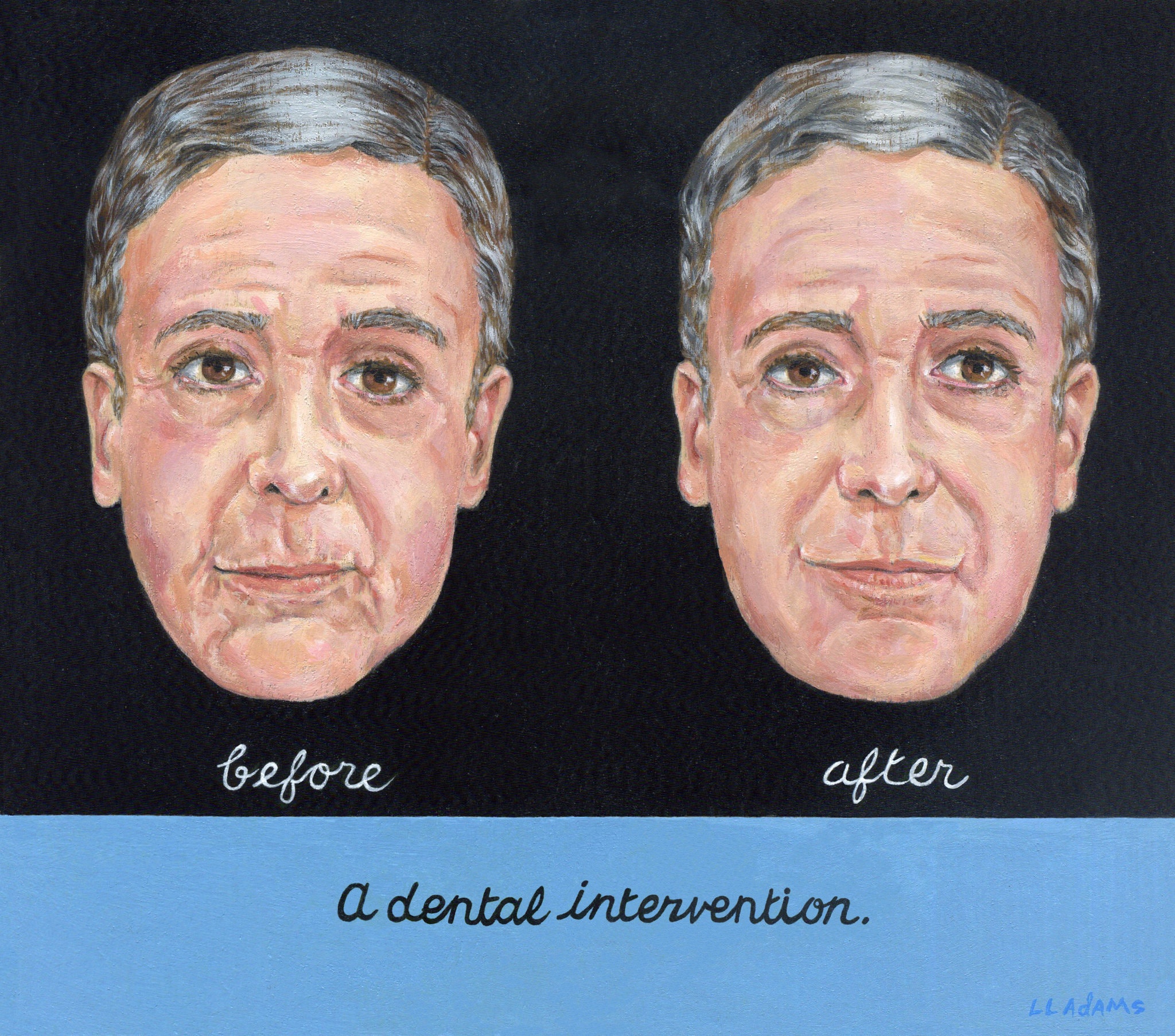Our thoughts on teeth and aging typically begin and end at color. A white smile is youthful, so we bleach our teeth. But there’s a wide world of so-called anti-aging dental interventions out there. With orthodontics and restorations, dentists can often manipulate the size, shape and arrangement of teeth to subtract years from a face.
To understand how it works, imagine someone with no teeth (“edentulous” in dentist lingo) — your grandpa without his dentures. Without the support of his teeth, his mouth collapses onto itself. The lower portion of his face shrinks. Now imagine grandpa pops in his dentures. His face fills out. He doesn’t look young, but certainly less old.
Grandpa is an extreme example, but this loss of support and subsequent facial “shrinkage” (what the experts call it) doesn’t occur only in the toothless, because teeth gradually change shape throughout adulthood.
“The people who really connect to this idea — that your teeth impact how old your face looks — are those who don’t have teeth,” said Elisa Mello, a dentist with NYC Smile Design. “When people have a full complement of teeth, they’re not associating loss of tooth structure with the aging they see when they look in the mirror.”
Wait, what? My teeth are changing shape?
As we age, our faces lose volume in both the soft tissue (fat and skin) and bone — our eye sockets get larger, the bones of our forehead and jaw recede. Our teeth lose volume, too. And, as Joseph T. Hung, a dentist with RockCenter Orthodontics in Manhattan, explained, the cheeks and lips are supported by the teeth and jaw, so their size and shape have an impact on the overall shape of the face.
“Support to soft tissue of the face will decrease with age, and this is how facial collapse occurs slowly with time,” Dr. Hung said.
Smiles lose volume following two main patterns. Teeth, especially those in the back, get flatter and shorter because of the regular wear of chewing, which is accelerated by grinding and clenching, Dr. Hung said. Shorter teeth mean a shorter face. The bite is collapsed, the lower jaw is squished into the upper jaw. The result is an aging look (again, picture grandpa).
Second, teeth get pushed inward over time by the jaw muscles. Clenching exacerbates the problem because clenched muscles exert even more inward force on the teeth.
As a result, the smile (or arch) becomes narrower, offering less support to the cheeks and skin. You’ll perceive this narrowing as facial hollowing around the cheeks and a flattening, or curling in, of the lips.
So how can dental work help?
Every set of teeth is unique, but generally Invisalign clear aligners are used to move teeth outward, broadening a smile that has narrowed. “Think of the narrow arch being V-shaped, with the tip of the V being in the front, and the teeth then moving to an ideal U shape over time with aligners,” Dr. Mello said. “Some cases might need other appliances to expand the palate as well.”
Tooth height is typically corrected by shape and height restorations. Invisalign can correct the vertical part of the problem, too, if the teeth are tipped forward or back.
“When you untilt them, you’ve just increased the vertical,” Dr. Mello said. Picture a person leaning forward at the waist. When she stands up straight, she’s taller. This straightening up is similar to the correction made by an orthodontic appliance on teeth to increase their height.
“No one ever comes in complaining about their face and thinking their teeth are responsible,” said Ramin Tabib, also of NYC Smile Design. “Some know that their mouth is pretty beat up, and they need a reconstruction of their bite, but they’re not aware of how it can transform facial features.”
Christian Noble was one such patient. She saw her smile as “too angled.” Her side teeth were worn down, dramatically decreasing their height. “I started to look off-kilter,” she said. “I said, ‘How can I fix this?’”
Dr. Tabib’s plan involved a jaw realignment (using an orthotic), so her mouth could accommodate her new teeth size and bite, restorations to repair her tooth shape and veneers in front.“It added fullness to my face,” Ms. Noble said. “It’s more oval now. I didn’t really know what was missing until all the work was done.”




